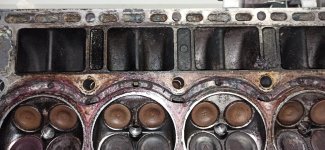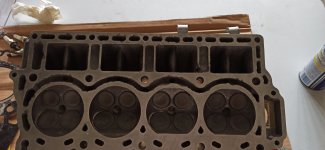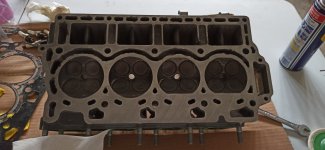Given that it was leaking, I would price what a machine shop would charge you to check it for flatness and maybe surface it to make it flat again, which will also make it a clean surface. If the price is reasonable it could be money well spent. Also they make a special chemical for removing gaskets, search for gasket remover. That may help you on the block side. If you really want to do it yourself, one thing you can do is place or very thinly glue some sand paper sheets to a piece of glass laid flat on a table, then drag the head around on the sand paper. Typically glass is fairly flat. Resist the urge to use a wire wheel on a drill or anything like that. You'll almost surely end up with a non-flat surface which reduces your odds of success.
If you want a quick sanity check for how well the valves are sealing, lay the head on one side and fill the valve pockets with alcohol, gas, oil , etc.. and see if any leaks past the valves. Flip and repeat on the other side.























